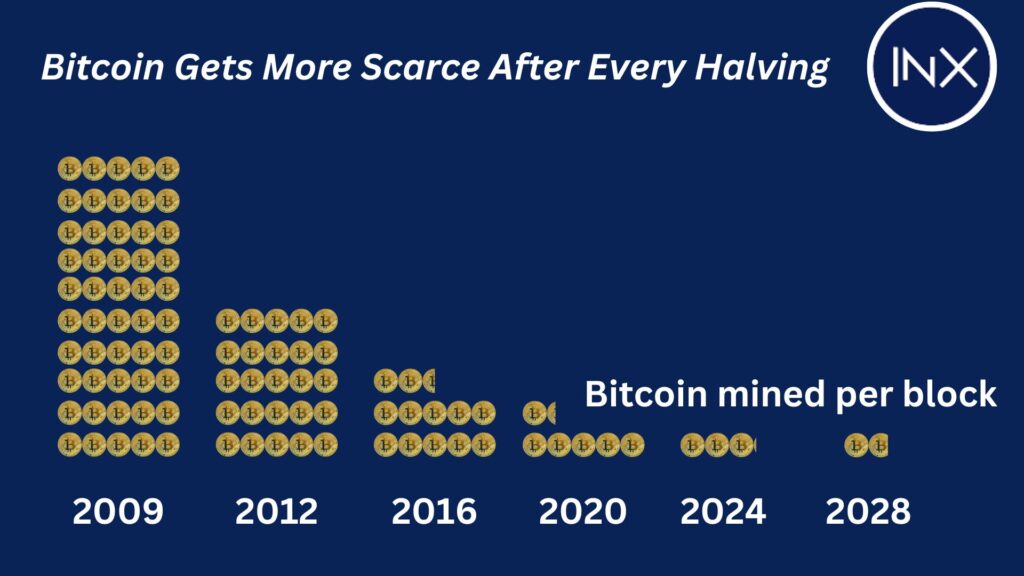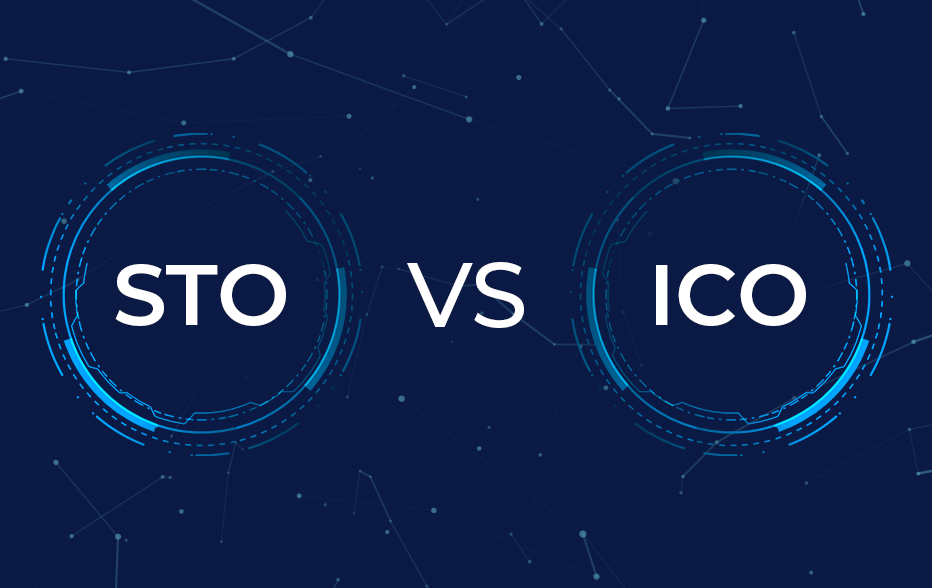Bitcoin Halving Date 2024: How Will It Impact the Crypto Market?
Updated: Apr 2024

The crypto world is buzzing as the Bitcoin halving date of 2024 looms. But what’s all the fuss about? Simple – the Bitcoin halving is a game changer. It’s a built-in feature that halves the Bitcoin mining reward, slashing the rate of new Bitcoin creation in half approximately every four years. It’s like an adrenaline shot to the heart of the market. As the 2024 halving draws near, more eyes will be drawn to this colossal event, unique in the financial landscape.
What is the Bitcoin Halving?
Bitcoin halving is a unique event in the cryptocurrency world, integral to the design and value of Bitcoin. This event, programmed into the Bitcoin code, takes place approximately every four years, or more specifically, every 210,000 blocks mined. During a halving, the reward for miners who successfully validate a new block for the Bitcoin blockchain is cut by half.
Simply put, Bitcoin halving is like a regulated, automatic supply shock. When Bitcoin was first created, the reward for mining a block was 50 Bitcoins. Since blocks are mined every ten minutes, this translates to 2.6 million coins entering circulation each year. After the first halving in 2012, it dropped to 25, 12.5 in 2016, and 6.25 in 2020 following the third halving.

This reduction in the reward is a crucial aspect of Bitcoin’s value proposition. As the rewards for miners decrease, the rate of new Bitcoin entering the market slows down, creating scarcity. And in economics, scarcity often drives value. This mechanism was put in place to mimic the supply rate of gold, providing an in-built hedge against inflation. As we move closer to the Bitcoin halving date in 2024, anticipation builds for its potential impact on the Bitcoin ecosystem.
The Economic Impact of the Bitcoin Halving 2024
The economic impact of the halving depends on the principle of supply and demand. Generally, when the supply of a good or asset decreases while demand remains constant or increases, the price tends to rise. The 2024 halving reduces the inflow of new Bitcoins into the market, potentially impacting supply.
However, Bitcoin’s price is also influenced by demand. When there’s increased adoption by institutional investors, retail investors, and businesses, it can significantly drive up demand. This could fuel demand leading up to and after the 2024 halving.
Michael Saylor on the 2024 Bitcoin Halving
Michael Saylor, the CEO of MicroStrategy expressed a bullish outlook on the 2024 halving. He views Bitcoin as a “digital scarce asset” and believes the halving will further solidify its position as a store of value.
In a recent interview, Saylor emphasized the historical impact of halvings, stating, “Every single halving in Bitcoin’s history has been followed by a massive bull run.” While past performance is not necessarily indicative of future results, Saylor’s comments highlight the potential for significant price appreciation following the 2024 halving.
A Look at Past Bitcoin Halving Events
Understanding the potential impact of the Bitcoin halving date 2024 requires a trip down memory lane. Let’s revisit the three previous halvings and their impacts:
The First Bitcoin Halving – 2012
The first Bitcoin halving took place on November 28, 2012. Back then, the concept of Bitcoin, let alone the halving, was not widely understood or anticipated. However, it had a profound impact on Bitcoin’s price. The halving reduced the mining reward from 50 to 25 Bitcoins per block, which created some degree of scarcity. At the time of the halving, Bitcoin was trading around $12. Within the next year, the price soared to over $260. The halving signaled the seriousness of Bitcoin’s monetary policy and placed it firmly on the map.

The Second Bitcoin Halving – 2016
Fast forward to July 9, 2016. The second Bitcoin halving occurred, reducing the mining reward from 25 to 12.5 Bitcoins. The crypto market was now more mature, with a higher level of interest and scrutiny from the public and financial institutions alike. Just before the halving, Bitcoin was trading at around $650. Over the next year and a half, it would reach heights of nearly $20,000. While many factors contributed to this surge, the reduced Bitcoin supply due to the halving played a substantial role.
The Third Bitcoin Halving – 2020
May 11, 2020, marked the third Bitcoin halving, cutting the block reward down to 6.25 Bitcoins. The stage was set in a globally tumultuous context due to the COVID-19 pandemic. Economies worldwide were on shaky ground, and unprecedented amounts of stimulus were being pumped into the global system. Against this backdrop, Bitcoin’s deflationary aspect seemed more relevant than ever. In the year following the halving, Bitcoin went from around $8,000 to an all-time high of over $60,000 in March 2021.

These past halving events underscore the potential for significant price movements in the wake of reduced supply. As we edge closer to the Bitcoin halving date 2024, we can only speculate on its impact. But if history is any guide, it’s a moment in crypto history you won’t want to miss.
The Evolution of Miner Revenue: Block Rewards and Transaction Fees
In understanding the impact of the Bitcoin halving date 2024, it’s crucial to consider the makeup of miner revenue. Traditionally, miner revenue has comprised two components: the block reward and transaction fees. As established, the block reward halves with every halving event. However, the role of transaction fees in this equation is becoming increasingly significant.
Satoshi Nakamoto, the enigmatic creator of Bitcoin, envisioned a future where, as block rewards decrease through halvings, transaction fees would grow to form a larger share of miner revenue. The intent was for Bitcoin’s network security to sustain itself through these fees once the last Bitcoin was mined.

This cycle, we’ve seen a striking validation of Satoshi’s prediction. With the advent of Ordinals, a form of Non-Fungible Tokens (NFTs) on the Bitcoin blockchain, demand for block space has surged. As a result, transaction fees have skyrocketed, constituting over 40% of total miner revenue at the peak of the cycle. This trend marks a crucial shift in Bitcoin’s economic model and provides compelling evidence that Bitcoin can indeed sustain itself in the long run by relying predominantly on transaction fees.
Can Past Halvings Predict the Future?
Looking back at previous halvings, a key observation is the swift price increase after each halving event. However, other factors also contributed to these price movements, making it difficult to isolate the halving’s precise impact.
For example, the 2012 halving also happened with a surge in mainstream media attention surrounding Bitcoin. Also, the 2016 halving took place during a period of increasing institutional interest and the emergence of new applications within the crypto space.
While these historical price surges are encouraging, if you’re expecting a similar outcome in 2024, it’s important to consider the current market landscape. The cryptocurrency market is far more mature than it was during previous halvings, and external factors like global economic conditions and regulations can also play a significant role in price movements.

Bitcoin’s Halving Effect on Price | Source: CryptoCom Research
The Halving’s Potential Long-Term Effects
The 2024 halving’s impact extends beyond just price movements. Here are some potential long-term effects you should consider:
- Increased network security: The mining reward reduction pushes miners to become more efficient. This can lead to a more secure Bitcoin network as miners require greater processing power to remain profitable.
- Hash rate fluctuations: The profitability decrease for miners might lead to some leaving the network, causing a temporary dip in the hash rate (measure of processing power). However, the network is designed to self-adjust difficulty, potentially mitigating this effect.
- Boost for alternative mining methods: The halving could incentivize the exploration of alternative mining methods, such as renewable energy sources, to reduce operational costs.
Final Thoughts
The 2024 Bitcoin halving is a key event with the potential to impact the cryptocurrency landscape significantly. Whether it triggers a major price surge or a more gradual appreciation remains to be seen. However, one thing is certain: the halving represents an important milestone in Bitcoin’s evolution.
Bitcoin Halving 2024: FAQ
What is Bitcoin halving?
The Bitcoin halving is a programmed event that halves the reward for mining new Bitcoins.
Why does the halving happen?
The halving is built into Bitcoin’s code to control the total supply of Bitcoins, ensuring the 21 million Bitcoins created is released gradually over time
How will the halving affect the price of Bitcoin?
The halving reduces the new supply of Bitcoins entering the market, which according to economic principles, could lead to a price increase if demand remains constant or rises. However, other factors also play a key role in price movements.
Will the halving impact the security of the Bitcoin network?
The halving could potentially increase the security of the Bitcoin network. With the mining reward decreasing, miners might be incentivized to become more efficient to remain profitable.
Meta: Understand the impact of the Bitcoin Halving 2024! Our in-depth guide explores supply reduction, potential price movements, and wider market implications.
David Azaraf June 6, 2023
Crypto enthusiast, help businesses plug into the token economy





